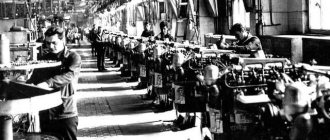Story
The company was founded in 1850 by Ignaz Schustala under the name "Schustala & Company". The company produced carriages and chaises. In the 1860s, the company had factories not only in the Czech Republic, but also in Berlin, Vienna, Wroclaw, Kyiv and Chernivtsi.
In 1882, it began producing railway cars. In 1891 the company was renamed "Nesselsdorfer Wagenbau-Fabriksgesellschaft".
In 1897, it produced the first passenger car in Central Europe and one of the first in the world - “President” (Czech: Präsident).
In 1918, a new name appeared - “Kopřivnická vozovka as”, and in 1919 the company began using a badge with the inscription “Tatra” - in honor of the Tatra mountain system.
After World War II the company was nationalized. The company produced luxury trucks and cars (until 1989).
On March 15, 2013, the company was sold at auction to Truck Development, owned by Marek Galvas, for 176 million crowns[2].
Heavy trucks manufactured by Tatra have been repeatedly used as a wheelbase for various heavy military equipment, as well as as military vehicles (for example, the 152-mm self-propelled gun-howitzer vz.77 "Dana"). Tatra produces all-wheel drive vehicles with wheel arrangements ranging from 4×4 to 12×12 (six-axle).
The company currently produces heavy-duty trucks with a backbone frame, which allows it to build lighter vehicles than those with a monocoque frame. In combination with air-cooled diesel engines, this reduces the vehicle's dead weight and makes them more economical. The creator of the spinal frame is Hans Ledwinka (Czech: Hans Ledwinka).
At the end of 2020, the company received a net profit of 390 million crowns, with revenue of 3.7 billion crowns.[3]
Tatra cars are multiple winners of the Dakar Rally.
| Truck production volume[4] | |
| Year | Production volume of civilian vehicles, pcs. |
| 1998 | 1473 |
| 1999 | 1209 |
| 2000 | 1686 |
| 2001 | 1551 |
| 2002 | 1761 |
| 2003 | 1439 |
| 2004 | 1654 |
| 2005 | 1497 |
| 2006 | 1511 |
| 2007 | 2431 |
| 2008 | 2252 |
| 2009 | 808 |
| 2010 | 931 |
| 2011 | 702 |
| 2012 | 496 |
| 2013 | 763 |
| 2014 | 821 |
| 2015 | 858 |
Years of manufacture 1941-1943, 1946-1947, 6,054 units produced
A car with two lives: the first is for war, the second is for peace. Deprived of independence on March 15, 1939, Czechoslovakia and all its industry came under German rule. In 1941, for the needs of the Wehrmacht, a military version of the civilian Tatra 57B with the index “K” was born (which means the “Kubelwagen” familiar to army vehicles). The car is assigned the Kfz category. 1. For the next three years until 1943, the Tatra 57K headquarters was produced at the German-run Tatra Ringhoffer Werke AG plant in Kopřivnica. Since at that time such a state as Czechoslovakia no longer existed, it turns out that the country of origin of the Tatra 57K was Germany.
The car was intended for soldiers, junior and middle command personnel of the Wehrmacht, a lot went to the police, and the elite of the Third Reich - the SS troops - also snatched it. Despite the small circulation and competing with the truly Aryan VW KdF Typ 82 Kubelwagen, the Czech Tatra appears on absolutely all fronts (Africa, Western Europe, Eastern Front). How did this little guy endear himself to the Germans? Perhaps it was reliability and ease of operation, which were worth their weight in gold at the height of hostilities? An interesting feature of the model was considered to be phenomenal ease of service: the hood of the 57th folded down along with the front fenders and headlights, providing free access not only to the engine, but also to the entire front suspension.
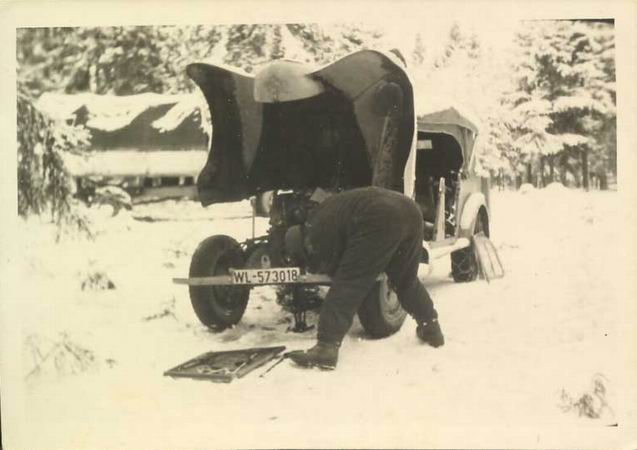
Or maybe his mobility? The Tatra turned out to be fast-firing and extremely efficient: 90 km/h with 23 hp. in contrast to Ferdinand Porsche's VW KdF Typ 82 Kuberlwagen, which, according to the passport, was capable of achieving only 2/3 of the speed of the nimble Czech - only 60 km/h.
The Tatra 57K owes its birth to one of the most famous and talented designers of the 20th century, Hans Ledwinka (1878 - 1967). By and large, self-taught - Ledvinka did not receive any in-depth automotive technical education - the native of Austria was known as a desperate experimenter, selflessly devoted to the ideas of technical progress, on his account:
- The first car of the Austrian company Steyr. 1920
- an avant-garde backbone frame for the Tatra T11, which, with minor modifications, formed the basis of all types of Tatra 57, including the “hero of our novel” 57K. 1923
- the world's first production car, thought out from an aerodynamic point of view, Tatra 77. 1934.
A brilliantly simple and durable design, which housed a driveshaft, advanced swinging oblique rear suspension arms, a low-maintenance 2-cylinder air-cooled engine, rack-and-pinion steering, and independent suspension front and rear.
Hans Ledwinka remained as Tatra's technical director throughout the war period, and he developed a military version for the Wehrmacht. In 1944 he received the degree of Doctor of Technical Sciences. After the end of the war, he was accused of collaborating with the German occupiers and spent six years in prison. In 1951, he left Czechoslovakia and moved first to Austria, where his son Erich headed a design bureau, and then to Germany.
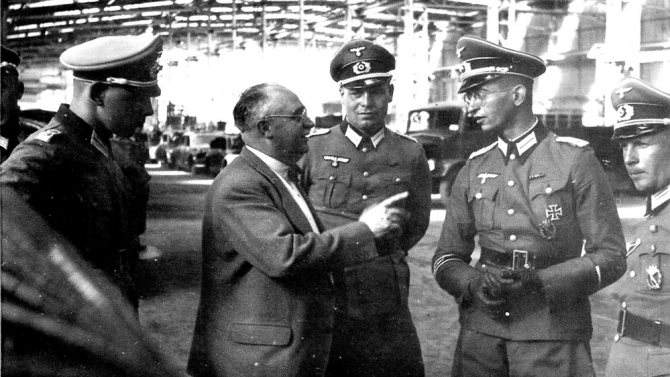
The second incarnation of the car occurs after the war on the territory of the liberated state. Newly minted Tatras are sent to serve the Ministry of Internal Affairs and the Army of Czechoslovakia. The last car rolled off the production line in 1947. Not many post-war Tatras were produced - 640 copies (approximately 10% of the total production). With the end of production of the civilian version of the Tatra 57B in 1949, the entire history of Tatra small cars comes to an end. The company in Kopřivnice finally switches to “large” models.
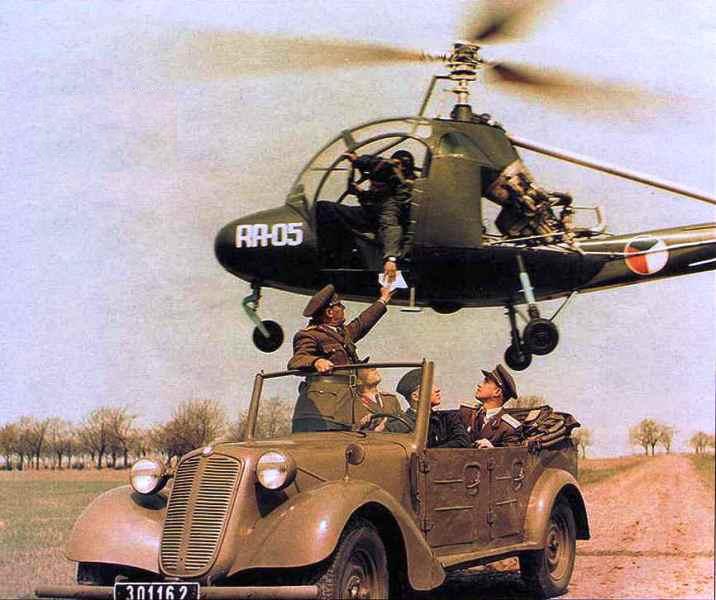
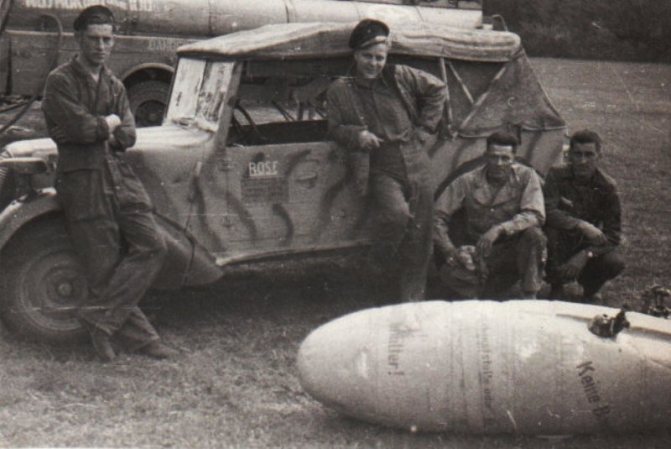
Our days:
- There are about 10 genuine cars known in the world, there are replicas and fakes using a civilian donor
- There are 2 cars in Russia - one that requires restoration, and the only one that has been restored, in the collection of the “Trophy Cars” project
Share
- Tweet
- Share posts on Tumblr



